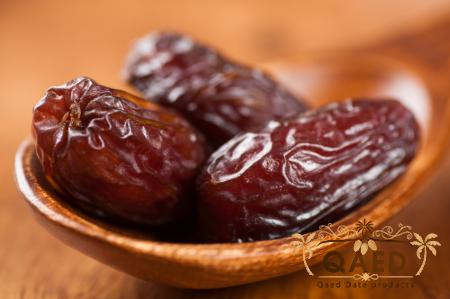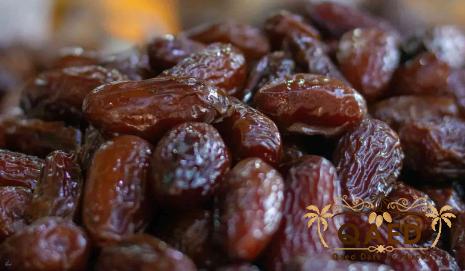Cultivation of Medjool dates is a laborious process.
The harvest season varies from region to region.
Dates, the delicious fruit of the palm tree, are one of the oldest cultivated fruits in the world.
Known for its rich amber color, wrinkled skin, and creamy flesh, Medjool is one of hundreds of date varieties.
Its distinctive taste includes honey and cinnamon as well as caramel.
Due to the difficulty of cultivation, Mzghuls are more expensive than many other types of dates, which require manual pollination and manual harvesting of the fruit.

From September to November, several farmers’ markets sell fresh Mayjule dates locally.
There are palm trees that produce dates that produce dates.
The date garden looks like a date garden.
Look a little closer and you’ll see a mountain of fruit on them!
Many orchards contain ancient palm trees that are relatively tall, so staff are often trained to care for the fruit, including bagging for harvest, and using access lifts in older orchards.
Dates can be stored in an airtight container at room temperature for up to one month.
However, dates may degrade over time, so it’s best to consume them within a week of purchase to get the most flavor out of them.
Storing dates in a ziplock bag or container in the refrigerator can keep them fresher and keep them fresher for longer.
If there are a lot of dates, they may be frozen for longer storage.
Divide them into smaller containers before freezing to ensure they defrost well and retain their natural sweetness when thawed and served.

Medjool date season
Because Medjool dates are popular in the United States, harvest season is important for American distributors.
The deserts of California and Arizona are where the majority of the date crop in the United States is produced because the palms grow in dry environments.
A chapter in the history of Medjool
This fruit is one of the autumn and winter varieties because it is harvested between the months of September and March.
When dates are in season, farmers markets in southern California and Arizona may have fresh dates for purchase.
In addition, some manufacturers offer them for sale by mail order, and in addition, you may look for them in specialty stores and often in markets in the Middle East.
You may be able to purchase fresh dates from your local grocery store, packaged or in bulk, depending on where you live.
Dates that are still fresh may have some wrinkles, but their texture should not be firm.
Try to get fresh dates that are not dry and have a slight shine on the skin.
Fat dates are the best.
You should avoid dates that still have sugar crystals on their skin (a little white is fine, but actual crystals are not), as this indicates that the dates are not as fresh as you would like.
Dates, which are dried and then packaged for sale, are available year-round and can often be found in the grocery section devoted to baking.

Medjool date harvest
What are the stages of harvesting Medjool dates?
Dates are harvested from the trees in large bunches using a machete.
Dates are readily available in late fall and early winter when they are in season.
Additionally, since dates store well in the refrigerator, you may be able to find them fresh year-round.
Although fresh dates are dry, fresh dates are juicy and sweet.
Consumers can enjoy dates just a few days after harvest because dates are grown at the right time of year in the United States.
Dates straight from the tree, some say, are the best.
Because of the pit, some people avoid eating fresh dates because they think they are too hard to taste.
Make a small cut in the top, peel the sides and then remove the seed from the pod.
Chopsticks and other similarly sized and shaped tools work well for this as well.
By inserting the small end of the chopstick into the other end of the date, gently press to remove the pit from the date.
The best part?
Then you can fill dates with cheese or filling of your choice.
Medjool dates yield per year
“Majul” dates should be produced from cuttings rather than seeds to maintain their varietal characteristics.
Only female palms bear fruit. Most commercial gardens are women only.
The production of Medjool dates is per year
The pollen of male trees is pollinated by hand.
The offset increases slowly at first. A bud at the base of the mother tree takes 18 to 36 months to grow outward.
After three to four years, depending on the growth conditions and the size of the parents, the offset may separate.
1 foot tall This delicate work requires special tools.
When a rooted shoot is about 4 or 5 feet tall, it takes about three years to flower for the first time.
When the branch is at least 5 or 6 years old, or about 6 to 7 feet tall, it begins to produce a significant amount of fruit.
5- to 8-year-old plants produce about 22 pounds of fruit per tree, while 13-year-old trees produce about 176 pounds of fruit per tree.
It takes 15 to 20 years for the trees to reach a height of 20 feet (excluding leaves), depending on growing conditions.
Over 100 years, date palms may grow to over 100 feet.

The production of Medjool dates is per year
“Majul” date palm, which can withstand drought and high temperature, grows faster and produces more fruit in spring and summer under irrigation.
Late summer and early autumn rains destroy ripening fruits.
The growth rate is also affected by the amount of fertilizer used.
According to research conducted by University of California Extension Service scientist Glenn Wright, faster trunk growth leads to earlier fruiting.
The Middle East and Africa consume 70% of the world’s dates.
Saudi Arabia produces 21% of the world’s dates, followed by Iran, UAE, Tunisia and Egypt.











Your comment submitted.